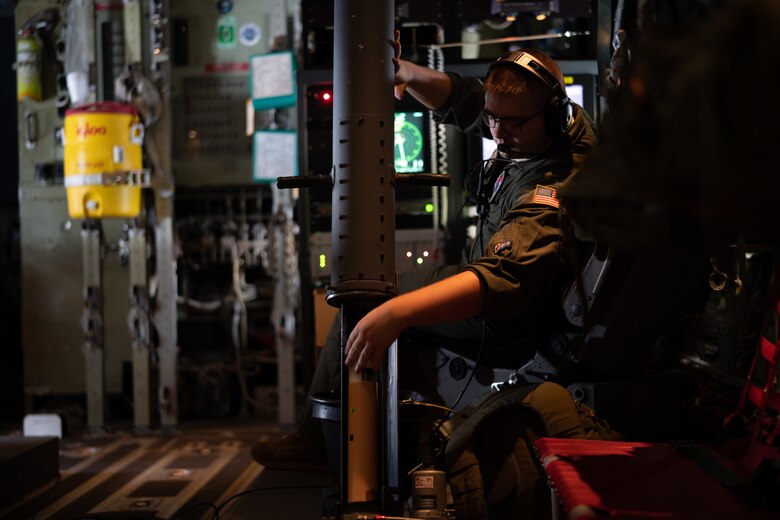The 53rd Weather Reconnaissance Squadron " Hurricane Hunters," flew nine missions into Hurricane Sally to track the storm and gather data.
The 53rd WRS, an Air Force Reserve unit assigned to the 403rd Wing, started flying missions into then-Tropical Storm Sally from their home station, Keesler Air Force Base, Mississippi, Sept. 11, said Maj. Grant Wagner, a 53rd WRS navigator and mission commander.
As the storm headed toward the coast of Mississippi, the 403rd Wing evacuated their planes to another base and relocated three WC-130J Super Hercules aircraft to Ellington Airport, Texas to continue flying missions into Sally.
During their flight late Sept. 13, the tropical storm was upgraded to a hurricane. As a Category 1 hurricane, forecasters were still uncertain of how much Sally would strengthen.
"The eye of the storm struggled to remain stable, but had category 1 winds," said Capt. Melissa Templeton, 53rd WRS aerial reconnaissance weather officer.
The Hurricane Hunters continued to fly missions into the storm to give the National Hurricane Center data for their forecast models using dropsondes.
"Dropsondes are weather data-collection devices that are released from the aircraft into the storm," said Senior Airman Donny Arseneaux, a 53rd WRS loadmaster. "We deploy multiple 'sondes' to collect weather data, such as wind speed, air pressure, temperature, and humidity."
This data is sent back to the loadmaster's computer on the aircraft, and they send it to the weather officer for review before it is transmitted to the NHC to be used in updating the forecast models of the storm.
Over the course of six days, the aircrews tracked Hurricane Sally until it made landfall as a Category 2 storm near Gulf Shores, Alabama, Sept. 16.
After weakening back down to a tropical storm, it continued moving in a northeast direction.
Out of the storm's path, the aircraft were relocated back to Keesler AFB Sept. 17 to their mission of tracking future storms.

Members of the 53rd Weather Reconnaissance Squadron fly into Hurricane Sally to gather data Sept. 14, 2020, in the Gulf of Mexico. The Hurricane Hunters fly through tropical systems to gather weather data that they provide to the National Hurricane Center for their use in updating the storm forecast warnings. (U.S. Air Force photo by Staff Sgt. Shelton Sherrill)

Members of the 53rd Weather Reconnaissance Squadron fly into Hurricane Sally to gather data on Sept. 14, 2020, in the Gulf of Mexico. The Hurricane Hunters fly through tropical systems to gather weather data that they provide to the National Hurricane Center for their use in updating the storm forecast warnings. (U.S. Air Force photo by Staff Sgt. Shelton Sherrill)






